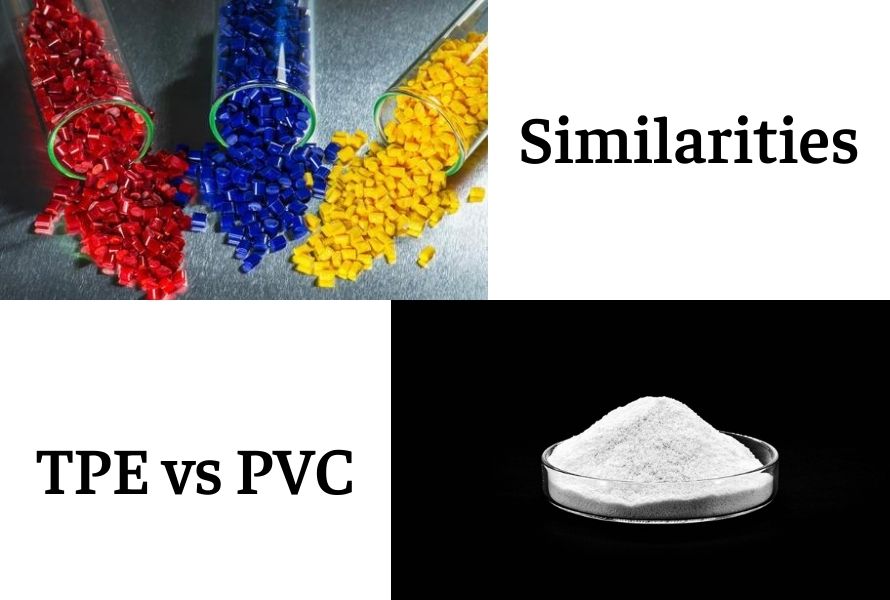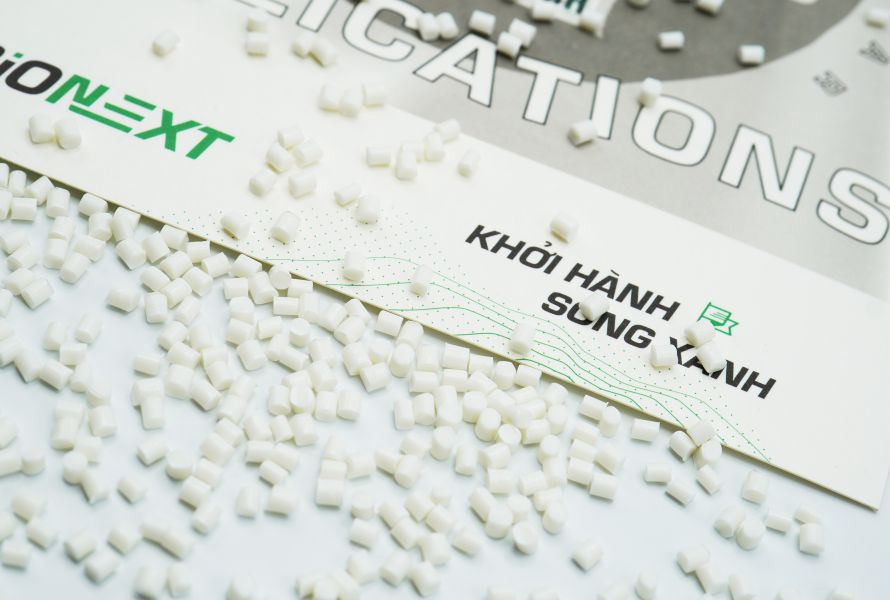In the realm of plastic materials, TPE & PVC serve different purposes, offer unique properties and characteristics to meet the diverse needs of industries and are actually widely utilized in daily life. These materials are frequently used in the production of toys, automotive components, medical equipment, and a wide range of household products.
EuroPlas will present a comprehensive analysis of the properties, attributes, pros and cons of TPE & PVC in this article. Additionally, a detailed comparison between the two materials will be provided. Our aim is to equip readers with valuable insights that will assist them in making an informed decision between TPE & PVC. So let’s get started!
Table of Contents
1. What is TPE?
2. What is PVC?
3. TPE vs PVC: A comprehensive comparison
4. TPE vs PVC: Which one is better?
5. About European Plastic Company
1. What is TPE?
What is TPE?
TPE, also called Thermoplastic Elastomer, is an artificial polymer that combines the characteristics of both thermoplastic and elastomer materials. It is extensively utilized in diverse sectors, including automotive, electronics, household appliances, healthcare, and several other fields.
TPE demonstrates softness, flexibility, elasticity, and the ability to return to its original shape after being deformed. These qualities make it an ideal substance for applications that demand flexibility and resilience, such as electronic accessories, toys, medical devices, and software.
Furthermore, TPE possesses resistance to chemicals, flames, and weather, enabling it to perform well and withstand harsh conditions. Moreover, TPE is easy to process and recycle, leading to cost savings and a decrease in plastic waste.
TPE offers a wide array of properties and applications, ranging from smooth and pliable plastics to firm and high-strength materials. Depending on the chemical composition and processing techniques, TPE can be customized to meet the specific requirements of different applications.
To summarize, TPE is a thermoplastic elastomer material that possesses exceptional flexibility, resilience, flame resistance, and weather resistance. It is extensively used in various industries. TPE provides the advantages of flexibility, durability, and recyclability, making it a versatile and cost-effective material for applications that necessitate elasticity and flexibility.
2. What is PVC?
.jpg)
What is PVC?
PVC, also known as Polyvinyl Chloride, is a widely used and versatile synthetic polymer resin that finds extensive application in various industries. It is characterized by its flexibility, resistance to fire, waterproofness, and chemical resistance. In addition, PVC contributes to production efficiency and cost savings.
Primarily composed of vinyl chloride (C2H3Cl), PVC forms a durable structure through the process of polymerization. Furthermore, PVC can be modified with additives such as fillers, plasticizers, and colorants to improve its properties and usability.
The notable features of PVC, including flexibility, resistance to fire and water, and chemical resistance, make it suitable for diverse applications. Its flexibility allows PVC to be molded into different shapes and sizes as needed. Additionally, its fire-resistant properties and ability to withstand harsh environmental conditions make it an ideal choice for constructing protective structures.
Harnessing its versatility, PVC can be easily processed and manufactured into various forms, catering to a wide range of applications. In the construction industry, it is commonly used for creating water pipes, drainage pipes, thermal insulation panels, partition materials, and protective structures, as it can withstand fire and harsh environmental impacts.
Nevertheless, it is crucial to take into account certain drawbacks associated with PVC. The production and handling procedures of PVC can generate harmful additives, raising concerns regarding environmental safety. Additionally, when PVC is burned, it can emit toxic fumes and substances. To ensure both environmental safety and human health, the utilization of PVC must be carefully regulated and controlled.
In conclusion, PVC is a polymer plastic that is both versatile and flexible, primarily composed of vinyl chloride. Its exceptional features include flexibility, fire resistance, waterproofness, and chemical resistance. Despite the drawbacks related to environmental safety, PVC remains widely utilized and holds a significant role across various industrial sectors and in daily life.
3. TPE vs PVC: A comprehensive comparison

Similarities between TPE vs PVC
TPE (Thermoplastic Elastomers) & PVC (Polyvinyl Chloride) exhibit various similarities in terms of characteristics, features, and intended usage.
Both TPE & PVC are widely utilized polymers in the industry and construction sectors. They are both thermoplastic materials that can undergo multiple meltings and reshaping when heated. This facilitates the effortless manufacturing and reusing of products made from both materials.
TPE & PVC possess favorable elastic properties, enabling them to stretch and naturally recover after experiencing loads or deformations. This quality renders both types of polymers suitable for applications that demand flexibility, including water pipes, medical devices, cushioning products, and insulation components.
Furthermore, both TPE & PVC display outstanding water resistance and are capable of withstanding tough environmental conditions. As a result, they are well-suited for use in industries such as construction, automotive, medical, and electronics.
TPE & PVC share a common characteristic in being recyclable and eco-friendly. Both materials can undergo multiple recycling processes without compromising their original properties. This contributes to waste reduction and the efficient utilization of recyclable resources. Additionally, these polymer types are non-toxic and pose no environmental hazards when burned or decomposed.
In summary, TPE & PVC exhibit numerous similarities. They are both thermoplastic materials with elastic characteristics, resistance to water, and recyclability, making them suitable for various industrial and construction applications. This similarity offers users flexibility and a wide range of choices when selecting the most suitable material for their specific requirements.

Differences between TPE vs PVC
However, TPE & PVC also exhibit distinct characteristics, which enables them to be applied in specific cases and different purposes. The following is a detailed comparison table of the differences between these two materials.
| |
TPE |
PVC |
| Material |
TPE made from combining elastic and stretchable polymer compounds |
PVC is a flexible type of polymer - a single vinyl chloride resin |
| Elasticity and Stretchability |
TPE has good elasticity and stretchability, allowing it to be stretched and bent without deformation or damage |
PVC also has elasticity but not as much as TPE |
| Hardness |
TPE comes in various levels of hardness, ranging from soft to hard, depending on the chemical composition and polymer structure |
PVC can be harder than TPE but can also be softened with additives |
| Mechanical Properties |
TPE also has good tensile strength, durability, and flexibility |
PVC has good mechanical strength and chemical resistance |
| Heat Resistance |
TPE can withstand temperatures ranging from -50 to 125 degrees Celsius |
PVC typically ranges from -10 to 60 degrees Celsius |
| Environmental Friendliness |
TPE is made from recycled materials, biodegradable, and causes less environmental pollution |
PVC, on the other hand, contains additives that can cause pollution when burned or not properly disposed of |
In summary, TPE & PVC are two materials with different properties and applications. TPE is commonly used in the production of elastic products such as car seat cushions, water pipes, and medical equipment. PVC is used in the production of water pipes, industrial pipes, and served construction works. The choice between these materials depends on specific application requirements and environmental considerations.
4. TPE vs PVC: Which one is better?
When it comes to the debate of TPE vs PVC, determining which one is better largely depends on the specific requirements and intended use. Both TPE (Thermoplastic Elastomer) & PVC (Polyvinyl Chloride) have their own unique properties and advantages.
TPE is known for its excellent flexibility, elasticity, and soft touch, making it a popular choice for applications that require an enhanced grip or comfort. It offers good resistance to chemicals, UV radiation, and weathering, ensuring durability in various environments. Another advantage of TPE is its recyclability, making it an environmentally friendly option.
On the other hand, PVC is recognized for its exceptional durability, strength, and rigidity. It is highly resistant to abrasion, impact, flame, and harsh weather conditions, making it suitable for demanding applications such as construction, electrical insulation, and plumbing. PVC also offers good chemical resistance and can withstand high temperatures.
Ultimately, the choice between TPE & PVC depends on the specific needs of the project or product. If flexibility, softness, and recyclability are important factors, TPE may be the preferred option. However, if durability, strength, and rigidity are critical, PVC could be the better choice.
It is recommended to consult with industry experts or conduct thorough testing to determine the most suitable material for your specific application. Keep in mind that factors such as cost, production requirements, and environmental considerations should also be taken into account when making the final decision.
5. About EuroPlas Masterbatch
EuroPlas is a highly regarded masterbatch manufacturer located in Vietnam. We are dedicated to delivering exceptional solutions across various industries and take pride in our commitment to excellence. Leveraging our extensive experience, state-of-the-art technology, and a strong emphasis on innovation, we offer an extensive range of premium masterbatch products. These products are designed to cater to diverse applications and meet specific requirements with utmost precision. Now, let's delve into the specifics of our comprehensive range of masterbatch offerings.
Our bioplastic compound is made from recycled and natural materials, with the goal of reducing harm to the environment. It not only meets physical and mechanical standards but also prioritizes eco-friendliness and the ability to be recycled.

Bioplastic Compound
Color masterbatch provides an excellent solution for creating unique colors for plastic products. EuroPlas supply high-quality masterbatch that guarantees accurate, stable, and long-lasting colors. We have a wide variety of colors available and can customize them to meet the different requirements of our customers.
Color Masterbatch
EuroPlas offer plastic additives that provide reinforcement, fire retardancy, improved stiffness, and enhanced processability for plastic products. These additives boost the mechanical properties, durability, and resistance to heat.
Plastic Additives
Our engineering plastic compound is specifically formulated for high-tech applications. It incorporates features such as chemical resistance, impact resistance, abrasion resistance, and easy structural control. This ensures that our plastic products meet stringent technical requirements and are reliable.
Engineering Plastic Compound
EuroPlas's filler masterbatch is a combination of PE or PP resin, calcium carbonate (CaCO3), wax, oil, and other additives. By incorporating this masterbatch, it reduces the production cost, improves the mechanical properties and dimensional stability of plastic materials while achieving the desired weight reduction. This optimization of cost-efficiency is achieved without compromising the quality of the final product.
Filler Masterbatch
EuroPlas bio filler products originate from sustainable sources, providing an environmentally friendly substitute for enhancing the characteristics of plastic materials. These bio fillers significantly enhance tensile strength, impact resistance, and stiffness, enabling manufacturers to produce sustainable products without sacrificing performance or functionality.
Bio Filler
At Europlas, we assure the delivery of meticulously crafted, high-quality plastic products with utmost precision and attention to detail. Our team consists of skilled professionals dedicated to providing exceptional customer service to ensure your complete satisfaction.
Discover the unique features of Europlas products and enjoy the unmatched quality and reliability that our esteemed customers depend on. Take the opportunity to contact us today and explore our wide range of products, finding the perfect plastic solution that precisely meets your needs.
Explore further valuable information here!